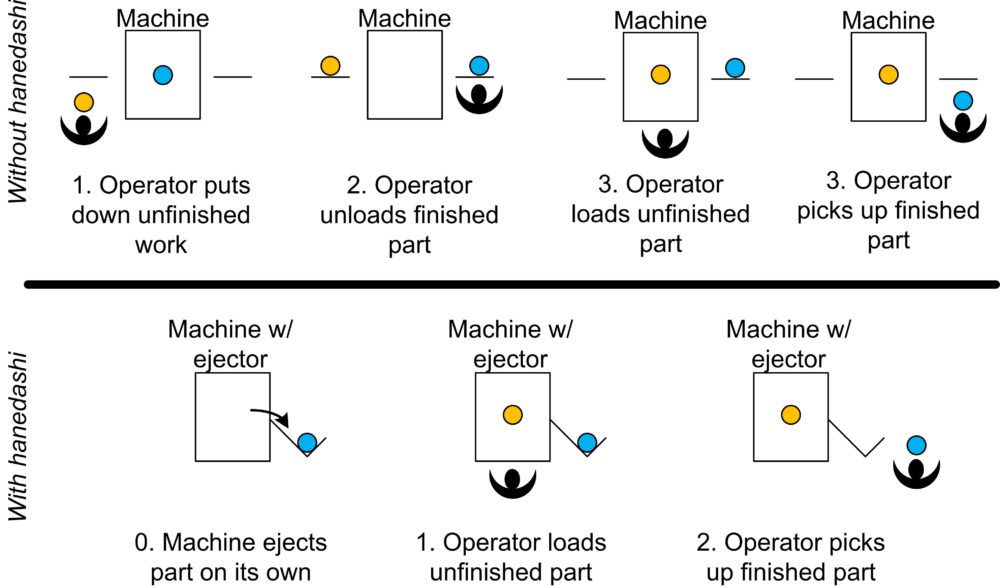Chaku-Chaku
A chaku-chaku line has a series of machines, each equipped with a hanedashi device, or autoejector. This enables the operator working a chaku-chaku line to:
- walk up and immediately insert the part he is holding into a machine
- press a start button, and then
- pick up the previously ejected part.
Because the chaku-chaku operator is running several machines, she relies on jidoka (autonomation). If there is a problem on a machine while the operator is away, jidoka stops production, preventing further defects or damage to the machine.

Chaku-chaku is a Japanese Lean term that translates to load-load. This is in reference to the process the operator follows-loading machine after machine in a chaku-chaku line with no need to unload.
Because of the rapid nature of the chaku-chaku cell, it will often be comprised of a number of single-function, right-sized machines.

Lean Tools Needed for a Chaku-Chaku Line:
- Hanedashi (autoejector)
- Jidoka (autonomation)
- Andon lights (to signal machine problems)
- Standard Work (to specify the process)
- Kanban (to closely manage inventory because the space for excess materials may be limited when machines are placed close to each other)
- Visual management / 5S (the rapid character of a chaku-chaku line means parts and materials must be in the correct location every time)
- Kaizen (chaku-chaku lines take a lot of work to complete)
- Right-sized machines (chaku-chaku cells tend to be single function and compact)


1 Comment
Is Self-Checkout Lean? « Kaizen Notebook · November 29, 2010 at 10:30 am
[…] our own little lean cell when we check out. She loads the items onto the scanner and scans them (chaku chaku), and I remove and bag them (hanedashi). It’s a superb example of workload […]